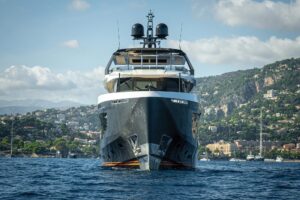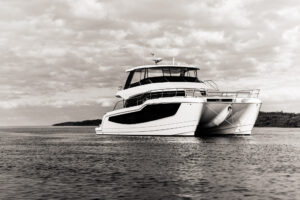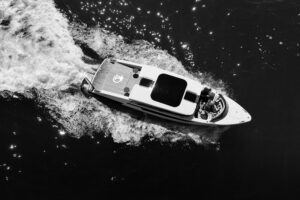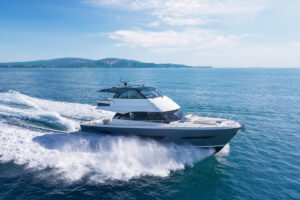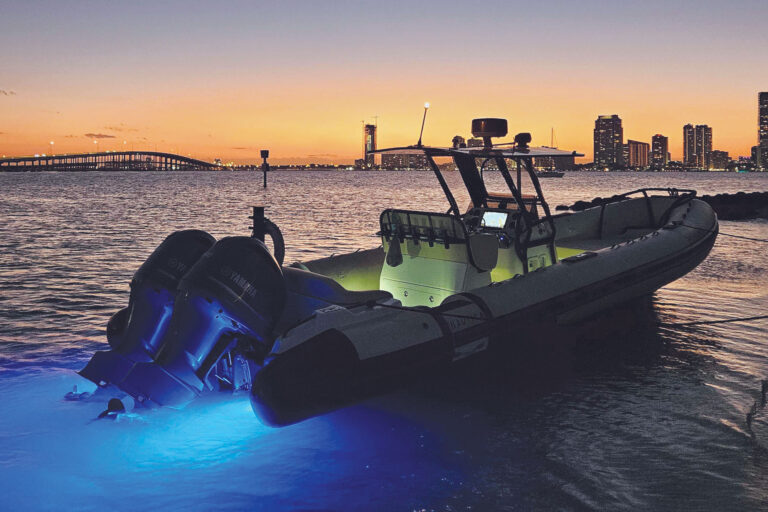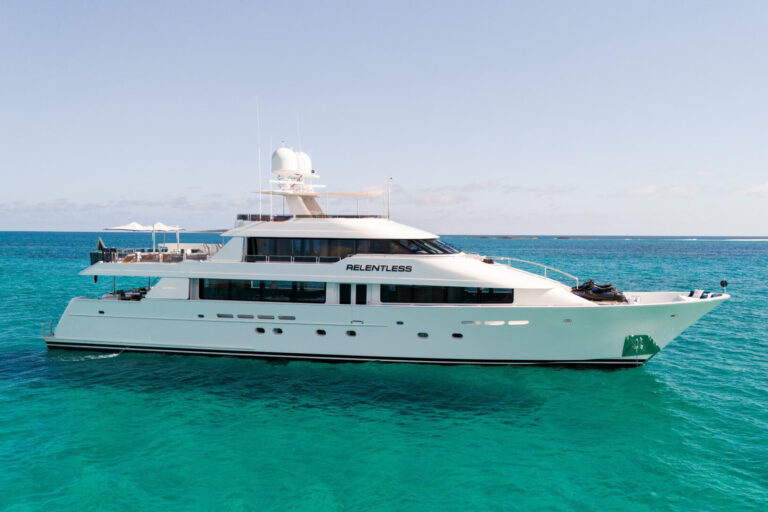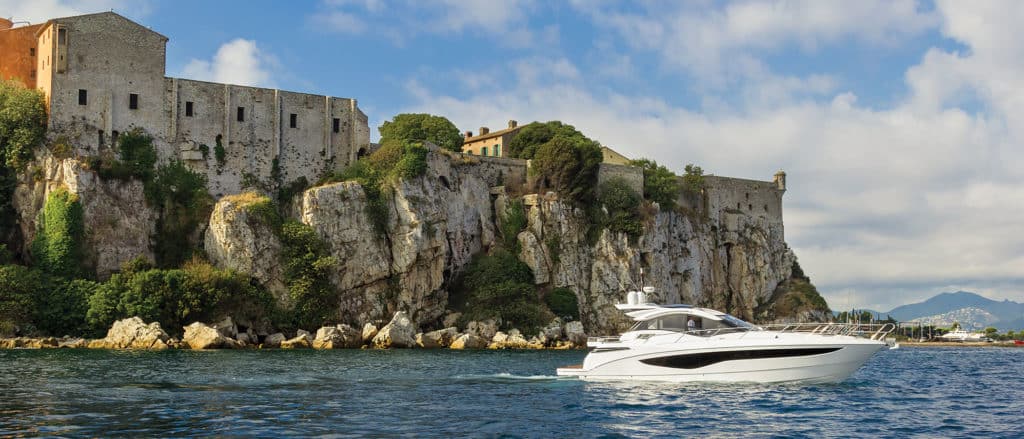
The hudson river’s southerly advance collided against a 15-plus-knot southerly zephyr whipping through the Verrazano-Narrows Bridge and into New York Harbor. I was running the Galeon 485 Hardtop Sport (HTS) downriver at speed into a 3-foot-steep head sea. I rolled the Zipwake trim system’s control wheel forward to drop the vessel’s nose, and the 485 HTS’s fine entry and solid fiberglass hull dispatched the seas with malice. She skirted across the chop at a 31-knot top hop. This rate of speed — even in those conditions — was 1 knot faster than the builder’s 30-knot top-end projection. The yacht hit that speed as her twin 435 hp Volvo Penta IPS600s (the only engine option) spun at 3,500 rpm, spot on with the motors’ maximum rpm rating. At a 3,000 rpm cruise, the 485 HTS sped along at 25 knots. Dialing the engines back to 2,500 rpm jogged her along at 18.6 knots. And she was conversation-level quiet: no creaks or groans, doors or cabinets popping open, or sun pads flipping up. The 485 HTS, which displaces 37,930 pounds when fully loaded, always felt solid underfoot. Her impressive performance was due, in part, to her build process, which starts with getting weight down low. Galeon begins the 485 HTS’s hull construction with a layer of hand-laid fiberglass, using the resin-soaked glass to add weight where it’s wanted. Next, Galeon places a dry mat and then vacuum-infuses the hull, moderating the vessel’s overall weight, which, in turn, affects horsepower requirements, performance, fuel tankage, fuel burn, range and the like. The builder gives equal attention to the yacht’s layout and amenities, which I wish the conditions had allowed me to “test” as thoroughly as performance. Starting at the full-beam teak hydraulic swim platform (a fixed platform is standard), Transformer-style swim steps fold open as the platform is lowered. An owner can add chocks for a dinghy. The transom garage has stowage for a couple of paddleboards and an inflatable dinghy. A garage hatch provides access to the engine room, which had enough space to scoot around the motors and access regular engine service points such as strainers and filters.
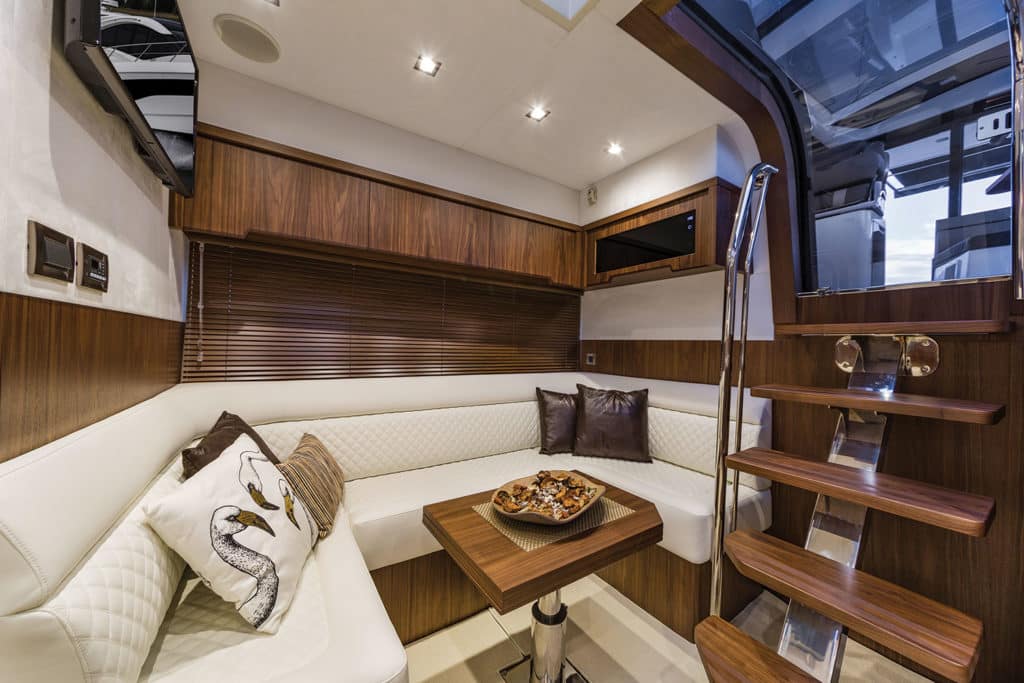
Flanking the garage are teak steps. The portside steps lead to the side deck, and three starboard-side steps lead to the cockpit, which has a U-shaped settee to port and a high-low table. Dropping the table and adding a filler cushion creates a sun pad. An optional SureShade Bimini top extends from the hardtop and covers the cockpit. My test 485 HTS had the top, and it was a welcome relief on a hot, humid day. I see the SureShade as a must-have for boaters in southern climes.
The cockpit connects to the main-deck interior space via a pocket door that slides to port. That door and the salon window drop into the vessel with the push of a button, creating a one-level, indoor-outdoor space.
The salon has a U-shaped settee to port and a high-low table with an Isotherm refrigerator across from it. The helm is forward and to starboard. Salon headroom is about 7 feet, and the space feels big thanks to nearly 360 degrees of glass windows, glass overhead in the center of the hardtop, and a retractable sunroof forward near the helm. With the roof open and the salon window and cockpit door down, I felt like I was a running a center-console. However, even with the yacht completely open and the wind puffing, salt spray never came over the rails.
A two-stateroom, two-head layout is belowdecks. The master is full-beam amidships with a queen berth measuring about 6 feet 5 inches long by 5 feet 1 inch across. A settee to port has a view out of two hullside windows. It’s a nice setup for a rainy day on the hook with a book. To starboard are cabinets with three sets of shelves, enough space for a cruising couple to take off for a week or two without wearing the same outfit twice. The master also has a 32-inch Samsung TV. An en suite head has a toilet and separate shower stall with 6-foot-7-inch headroom.
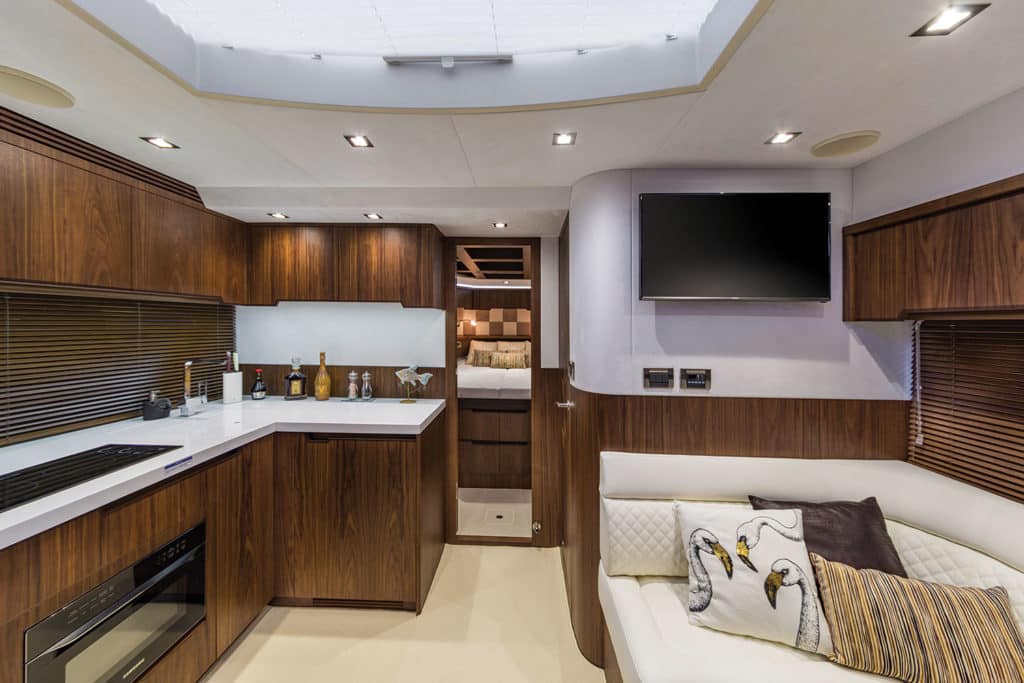
The forepeak guest stateroom has a step-up queen berth and an en suite head that also serves as the day-head. There are two hanging lockers, and four self-closing drawers are under the berth. The lower salon’s U-shaped dinette to starboard converts into an additional berth for kids or guests.
That lower salon feels voluminous thanks to 6-foot-10-inch headroom, overhead hatches, and a raked hardtop that allows light in from the main deck. Across from the dinette is a galley with a two-burner Kenyon cooktop, Samsung convection/microwave oven and refrigerator.
My test vessel had beachwood gray cabinets and a shore-white galley sole, with the light tones enhancing the sense of openness. Other choices include high-gloss walnut cabinetry and a misty gray sole with a white color scheme. Exterior color choices include tan and mocha, white and mocha, or silver and white.
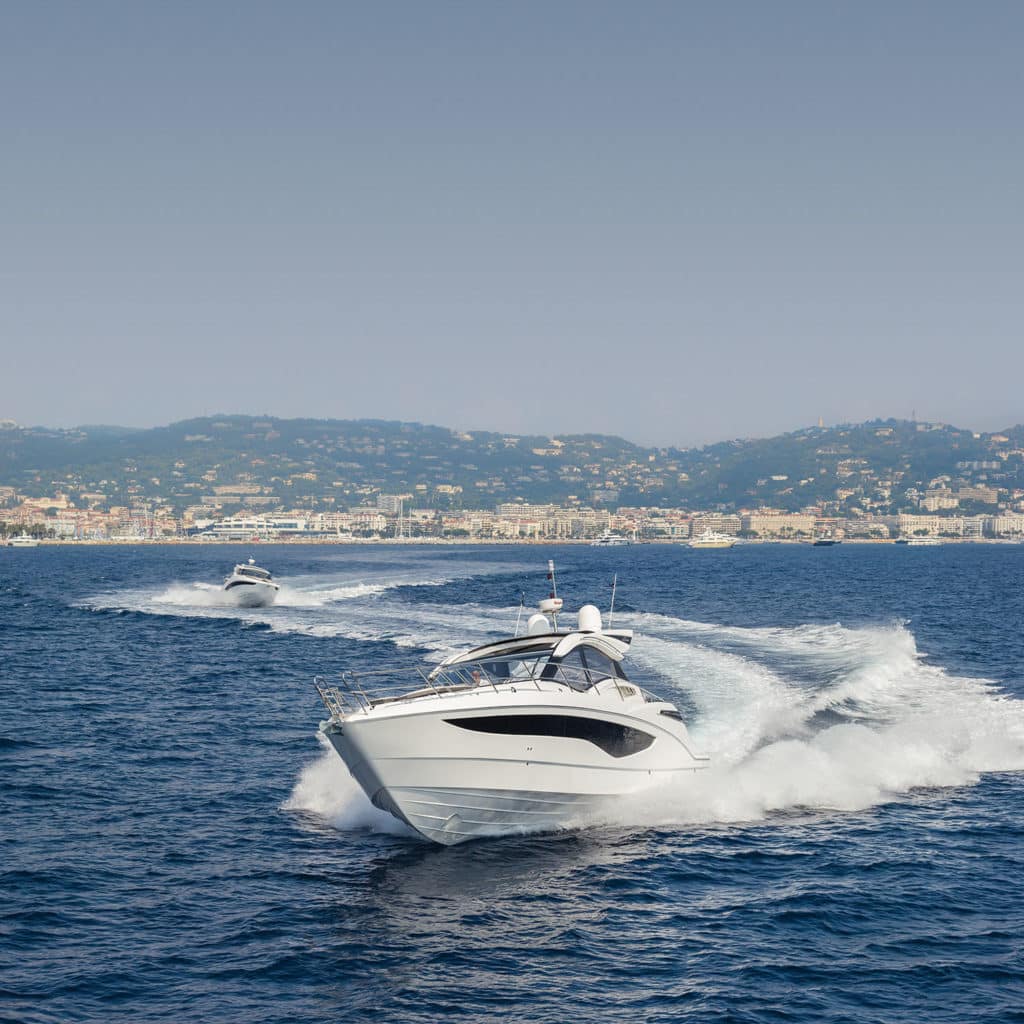
However the 485 HTS is outfitted, her low-profile look, sporty performance, cruise-friendly layout and sea-splitting hull form are standard. As we cruised in a harbor filled with new and classic yachts large and small, and an amazing view of the Manhattan skyline and Statue of Liberty, I noticed tourists on the ferries waving and breaking out their phones to take pictures of my ride. In a city with so much to see, that moment said a lot about the Galeon 485 HTS.
On Performance
The 485 HTS’s Volvo Penta IPS600s burn 30 gph at a 3,000 rpm, 25-knot cruise speed. With a 10 percent reserve on the yacht’s 317-gallon tank, the range at cruise speed is 237 nautical miles. Ramping to 31 knots at top hop, the yacht’s range is about 201 nautical miles. Dialing the rpm back to 2,500 gives her an average cruise speed of about 18.6 knots and a 253-nautical-mile range.
In the Family
Galeon is a vertically integrated company, which means it builds a lot of what it uses in its vessels. All hardware, rails and other metal parts are constructed from raw materials. The company also mills its own wood, such as the 3/8-inch solid teak on the 485 HTS’s swim platform. Upholstery is also fabricated on-site. The goal is quality control. The builder has 1,100 employees between its Gdansk and Wiślinka, Poland, yards, building about 120 boats per year that are more than 40 feet length overall.
Ergonomic Helm
The 485 HTS’s helm has flip-up bolster-style seats that I found comfortable, even when running at high speeds. Two 12-inch Raymarine multifunction displays and a 7-inch Volvo Penta display were directly in my line of sight, and the single-lever throttles, Zipwake trim control pad and Volvo Penta joystick were positioned in line and directly under my right hand.

